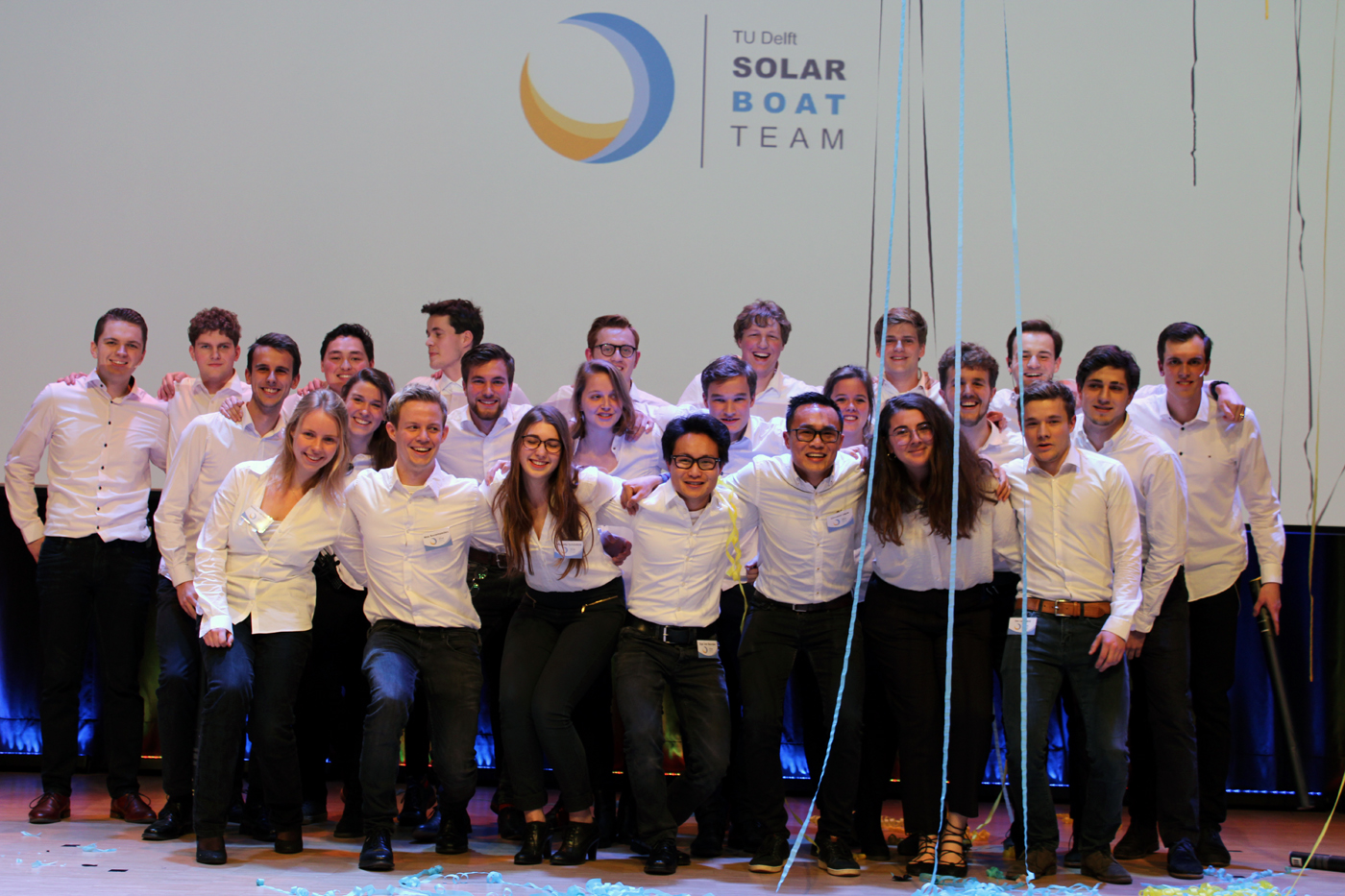The TU Delft Solar Boat Team has decided to go offshore. After 12 years of continuous improvements, the new team will build a bigger boat for open seas.
The 26 members of the TU Delft Solar Boat Team 2019. (Photo: Solar Boat Team)
The design presentation by the TU Delft Solar Boat Team took place on Tuesday 15 January. The audience saw a large square of solar panels floating on three hulls. A crew of three – an engineer, strategist and pilot – is seated in a row in the central hull of the trimaran. The trimaran lifts out of the water on its hydrofoils at about 23 km/hour, after which it will then accelerate to about 30-35 km/hour. At least, that is what the team is expecting from their design.
The previous team came second in the Solar Sport One last year. The Monaco Yacht Club organises the competition to stimulate the development of electric and solar yachts to replace the gas guzzlers of yesteryear. Redmer Aarnink, Exposure Manager of the TU Delft Solar Team, says the student team wants to promote sustainable innovation in the maritime sector. With the current design for an offshore version of the solar boat, the team aims to increase its credibility within the sector.


So, what had to change? Well, basically everything. The previous boat (110 kg) could be lifted by a couple of people. The offshore version weighs 750 kg, crew included. It has three struts with dynamically controlled hydrofoils. Two inward pointing L-shaped struts in front, and one larger T-shaped strut and foil at the rear. The solar panel generates up to 6.1 kW of power. The electrical engine (that drives the propeller behind the rear strut) has a maximum power of 60 kW.
Like an airplane
The boat needs maximum power to reach the transition speed of over 20 km/h. Once the boat is out of the water and on its hydrofoils, the estimated cruising power will be equal to the solar production of 6 kW. The solar boat will then ‘fly’ over the water in the sense that the pilot doesn’t use the rudder, but uses the front struts to steer the boat in the direction he wants to go. Like an airplane, the roll of the boat will steer it in the direction it is tilted.
The team opted for a trimaran because of the large deck surface and greater stability. As transporting an 8 metre long boat with a 6 metre beam is complicated, they went for a modular build of the three hulls and the deck. They know it’s a risky construction because of the wave impact and material fatigue.
Cross the Channel
Nevertheless, they have set 2 goals. The first goal is to finish first in the Solar Sport One competition, the unofficial world championship for solar boats. The race includes two long sea passages: from Monaco to Ventimiglia (30 km) and from Monaco to Cannes (93 km). The second goal is to be the fastest solar-powered boat to cross the Channel. ‘We want to show the world that one can cross these busy shipping lanes powered by nothing but the sun’, the website announces.
TU TV on last year’s Solar Boat Team
Do you have a question or comment about this article?
j.w.wassink@tudelft.nl


Comments are closed.